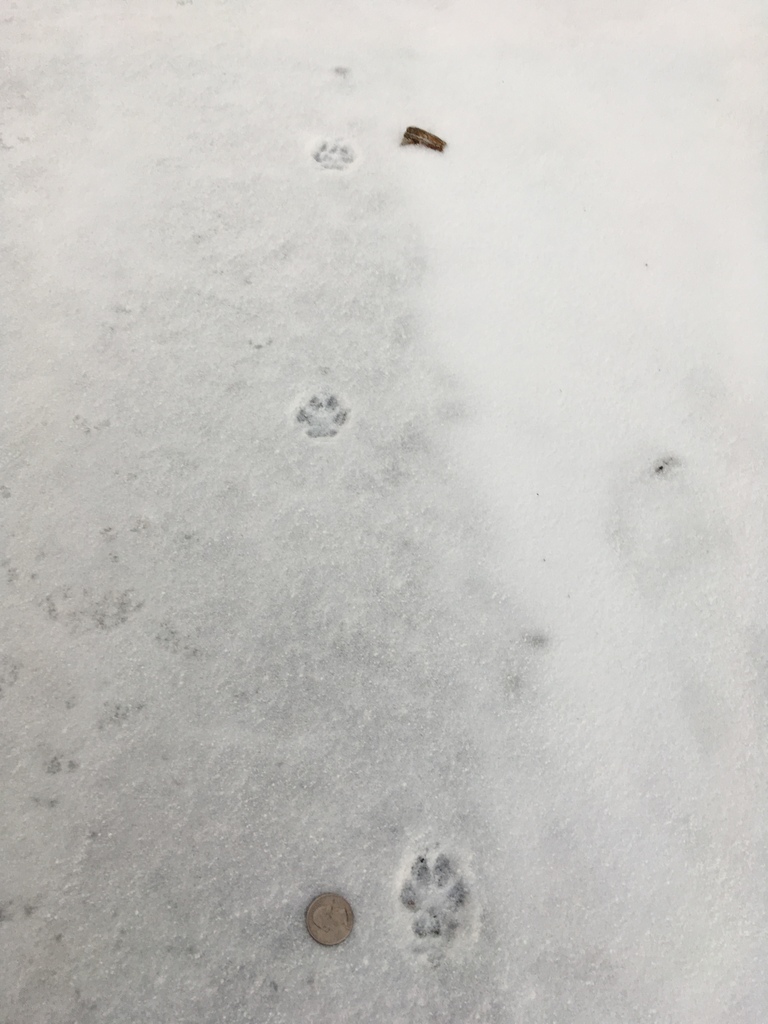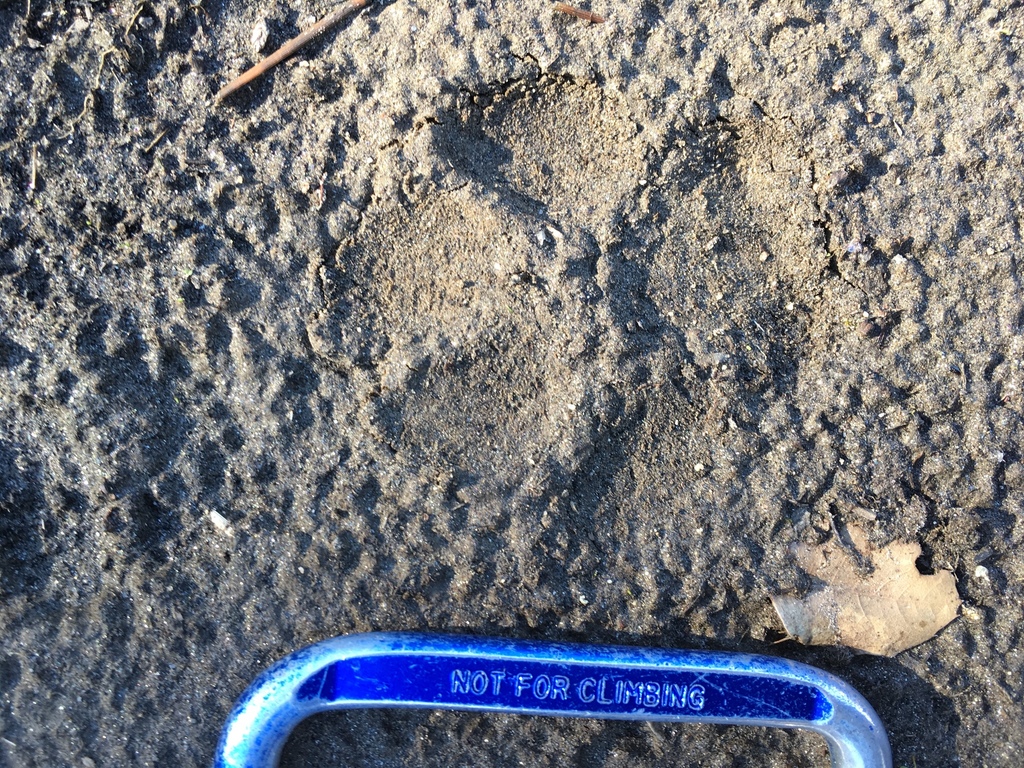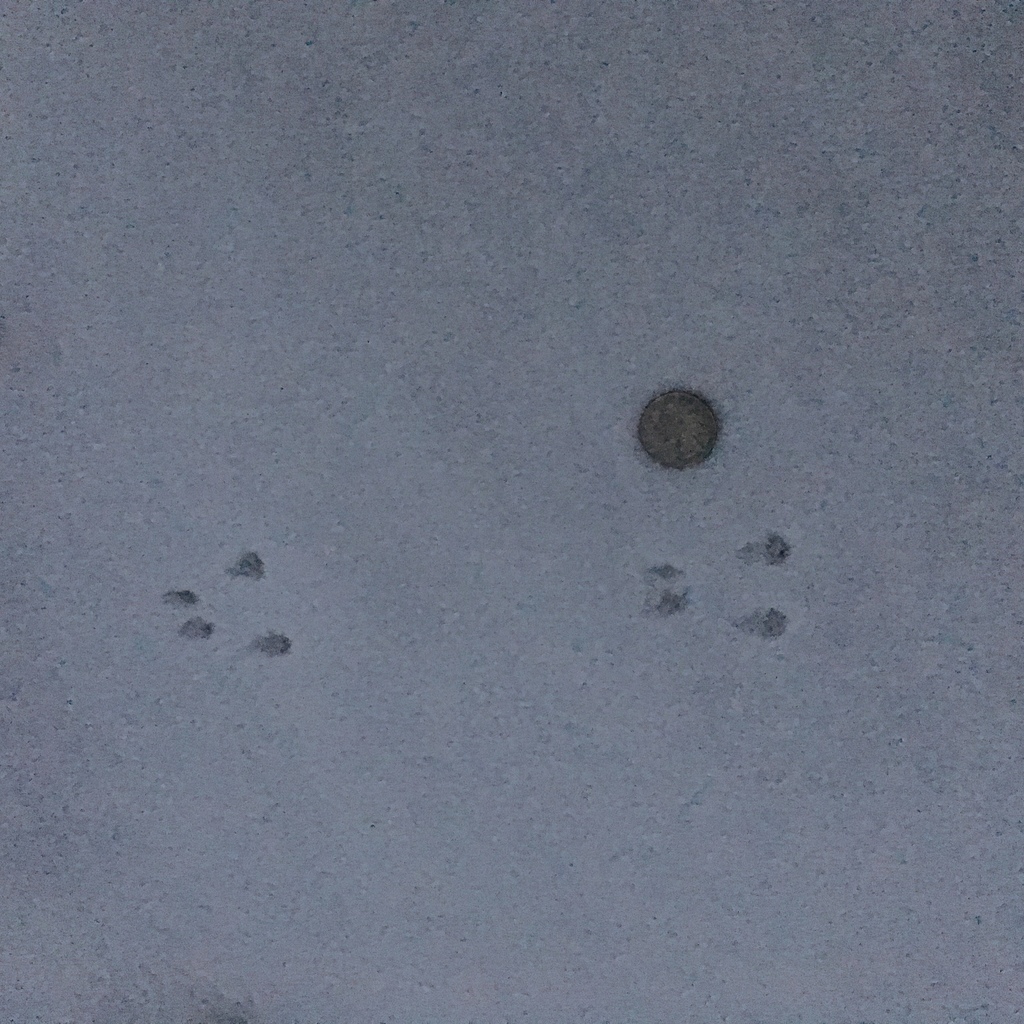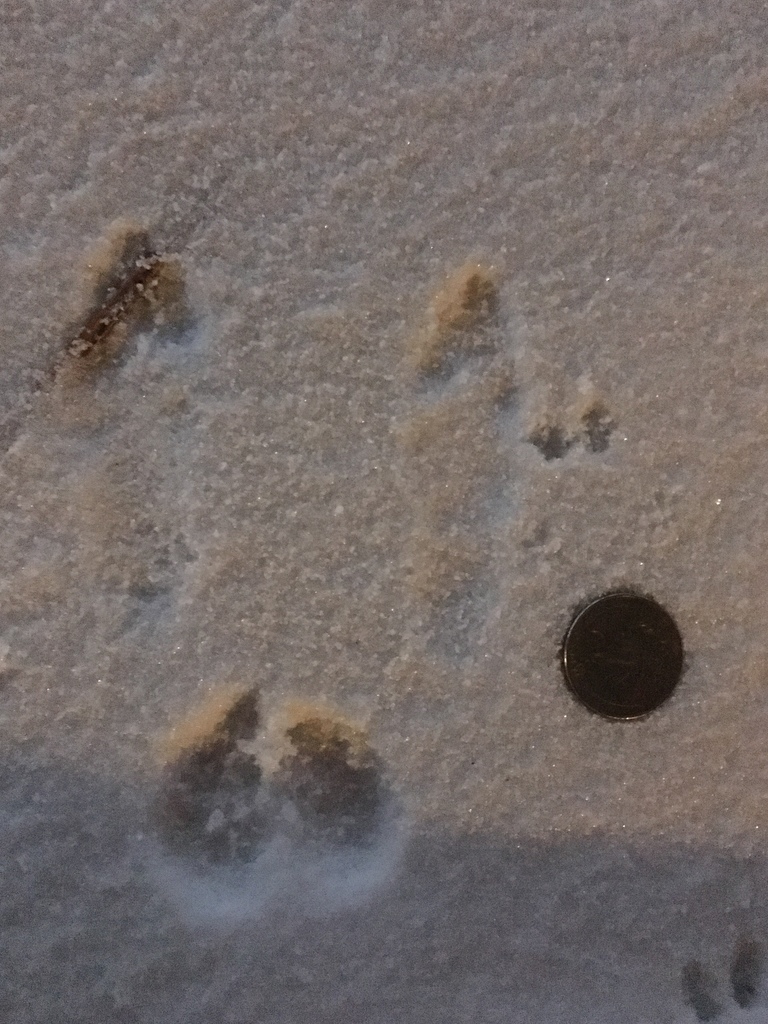Observing Tracks
Even when animals remain out of view, we know they are around. They leave tracks in snow and mud on the ground and other signs like scat, holes, and fur. Several prints as an animal moves make a track. Here are some tips for photographing tracks that will help you and others identify your observations:
1. Get a picture of the pattern.
In general, mammals have one of four gaits or walking patterns. This can help you narrow down the possibilities to a few groups of animals. The patterns are walking (left), hopping (center), waddling (right), and bounding (not pictured).



2. Find the best print.
Especially, in snow or mud some tracks will be clearer than others. Wet snow or a very light dusting of powdery snow is more likely to preserve details of a print like toes, claws, and pads. Take a photo of the clearest print(s) that you see in the track.


3. Use something for scale.
For some animals the only difference between the tracks of different species is the size. Adding something for scale helps you figure out how big it was later from your photo. You can use many things to show scale. A ruler is the best, but anything that is a uniform size works like a coin or card (make sure your info isn't in the photo).



The Extra Mile
Follow the trail a short ways.
An animal's prints may get smooshed when jumping or going up or down a hill. This distorts the shape of the print and can confuse identification. Looking at several prints let you check that you are photographing a print that is consistent with the other prints in the track rather than the one or two smooshed ones.
Play with lighting.
The details of tracks are easiest to see when there is some shadow in the track. With natural light, the best times to observe tracks are closer to sunrise and sunset, but you can take advantage of whatever light is around by adjusting the angle of your camera.
Photo Credit: All photos are by aspring and in the public domain.





Comments
Add a Comment